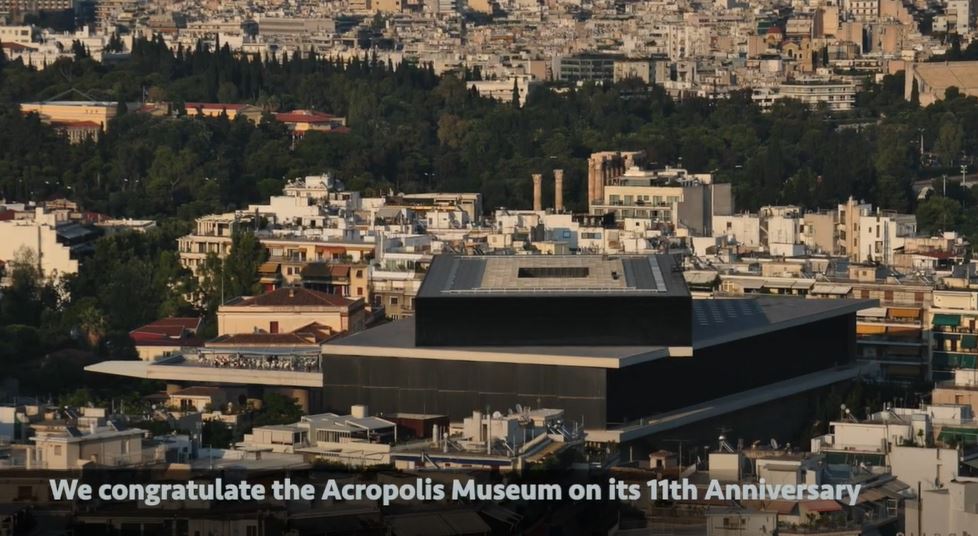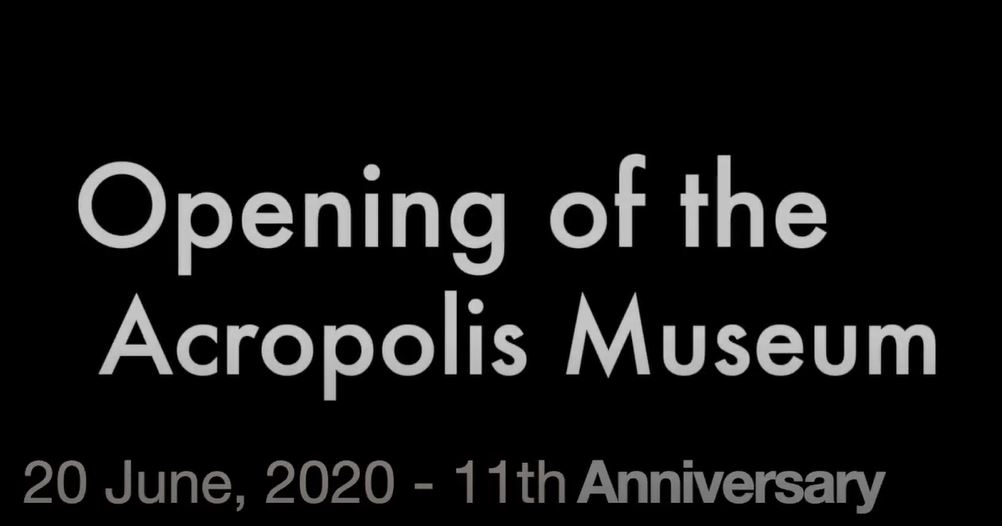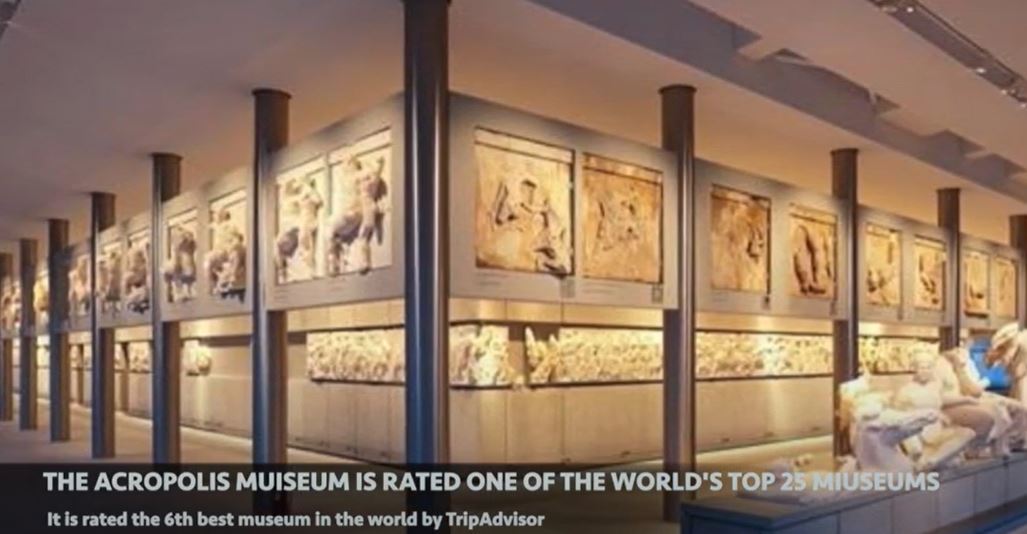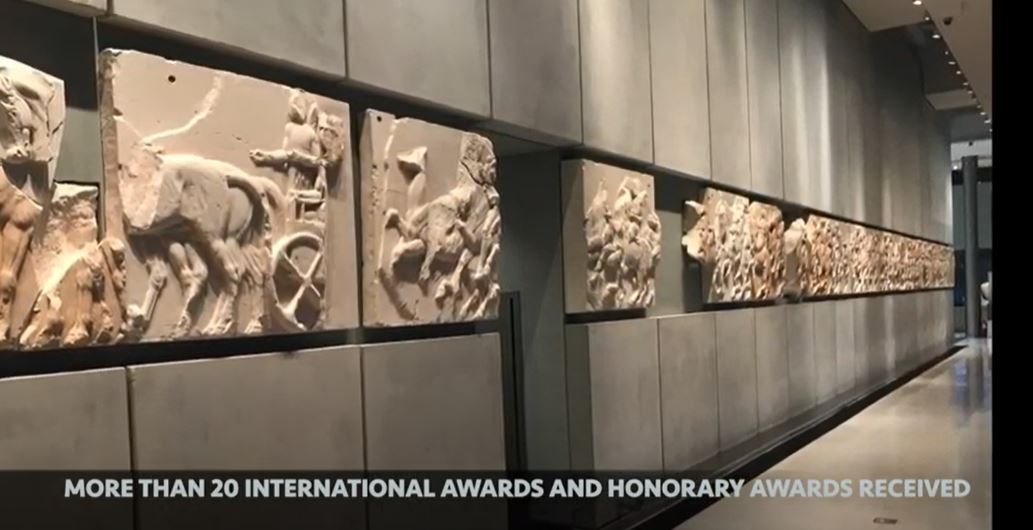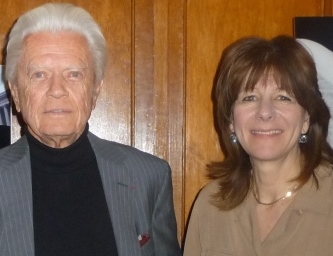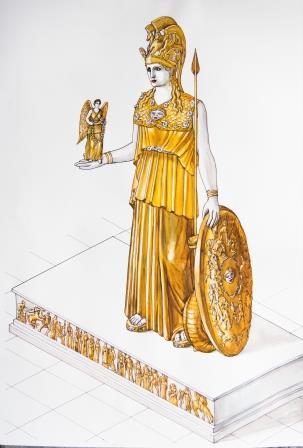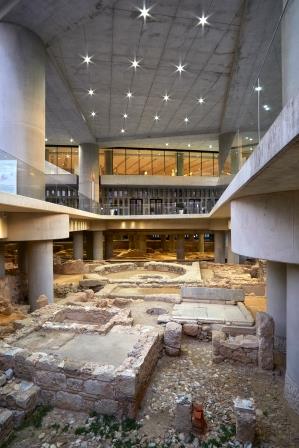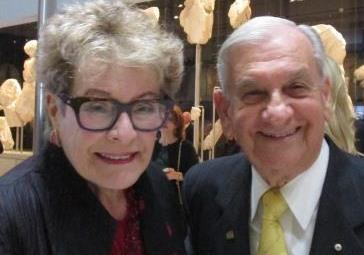But, dear electric, charming, voluble Eleni, your dream of the Marbles returning home to the land of your birth will one day be a reality. So for now we all salute you and your amazing life. You will be missed by all of us and most of all by those who loved you, of which I am one.
Dame Janet Suzman
13 April 2020
Yannis Andritsopoulos, London Correspondent for Ta Nea, Greece's daily newspaper commemorates the extraordinary life of Mrs Eleni Cubitt.
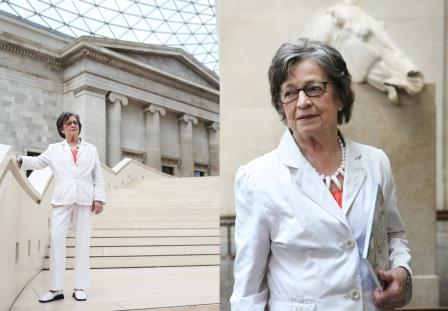
Photos courtesy of Nana Varvelopulou, Eleni Cubitt at the British Museum July 2009
Life and Style Magazine 2009
Eleni Cubitt was the heart and soul of the international movement for the reunification of the Parthenon Sculptures; the unsung hero of the campaign launched by Melina Mercouri 38 years ago; and the person who persuaded dozens of British politicians - including two Labour leaders - academics, artists and journalists of the need to right a ‘very old wrong’, as she called it, in the face of the intransigence of the British Museum and successive British governments.
Eleni Cubitt, a London campaigner, activist, filmmaker and protagonist against the Greek military junta, passed away last Wednesday at the age of 95.
She was born in Thessaloniki in 1925. Her family later moved to Athens where Eleni attended the American College for Girls.
At the age of 23, she married English diplomat Douglas Collard, then British consul in Patras, with whom he had five children. In 1964, having already lived in seven countries with her husband, she got divorced and settled in London, where she founded a film production company.
According to her son Paul, it was the Scottish Laird Sir Amer Maxwell who suggested to Eleni the idea of being a film producer, an activity in which he was actively involved at that time.
She later met French New Wave pioneer Jean-Luc Godard in Paris and persuaded him to make a film in Britain. 'Sympathy for the Devil', starring the Rolling Stones and produced by Cubitt, was released in 1968.
She also produced several documentaries on Ancient Greece. Her most recent film was 'The War That Never Ends' in 1991 for which she was the executive producer.
In 1968 Eleni married the distinguished British architect James Cubitt. Between 1975 and 1982, she was in charge of cultural affairs at the Greek Embassy's press office in London.
In 1982, during a meeting with Jules Dassin and Melina Mercouri, whom she had known since the 1960s, Eleni and James decided to set up a lobby group for the return of the Marbles.
The British Committee for the Restitution of the Parthenon Marbles was founded in 1983, later renamed British Committee for the Reunification of the Parthenon Marbles. Eleni became the Committee’s secretary, a post she held for 29 years.
Her husband died shortly afterwards but Eleni continued their work and dedicated her life to the Marbles’ reunification, working tirelessly to raise awareness of the cause.
She used her connections with the arts and business worlds, set up campaigns to inform the British public, organised protests, and mobilised journalists and MPs, among them Labour Party leaders Michael Foot and Neil Kinnock. Unfortunately for the cause, neither became prime minister.
“Family was very important to Eleni and, despite the many calls on her time professionally, it was always her first priority. The sound of the phone ringing, as it did constantly, was always followed by her call: ‘Tell them I am out, unless it is one of the children.’ She was also always happy to share her professional life with any of her children and grandchildren who were interested”, her children said in a statement.
“As children, we were expected to participate actively and to varying degrees, in the many causes she took on, not least the return of the Parthenon marbles. Because of her huge energy, she would prioritise finding the time for her children as they negotiated the many crises of growing up. Eleni loved to tell us stories, whether about the past, Greek myths or her daily experiences. In her later years, when her professional life was less demanding, she embraced her role as grandmother and great grandmother with the same enthusiasm, interest and energy and was much adored by all her 11 grandchildren and 2 great-granddaughters,” her children added.
Eleni was a member of the Honorary Committee of the Melina Mercouri Foundation and received awards from the Prefecture of Athens in 2009 (Ambassador of Hellenism) and the American College of Greece in 2011 (Maria West Lifetime Achievement Award).
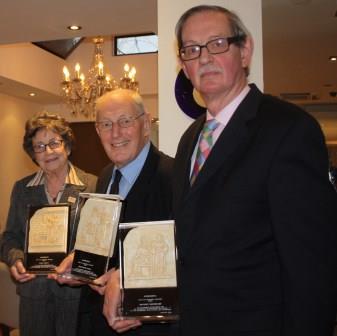 Ambassadors of Hellenism: Eleni Cubitt, Christopher Price and Professor Anthony Snodgrass
Ambassadors of Hellenism: Eleni Cubitt, Christopher Price and Professor Anthony Snodgrass
From 2012, she took a less active role and four years ago she moved from her Islington home to a care home.
“Eleni Cubitt - mischievous and classy and ever so Greek despite her very British associations. I remember she simply charmed me into joining the great Melina’s crusade, which of course I instantly wanted to do. It seemed such an attractive and important thing to try to put before ignorant eyes,” Dame Janet Suzman, Chair of the British Committee for the Reunification of the Parthenon Marbles (BCRPM), told Ta Nea.
“I suppose Eleni felt drawn to another, half this and half that as she was, and we became friends. Besides being an actress and bit politically voluble and full of all the usual ingredients to help push this thing along, I happily fell in on the Greek side of things - long before my son took up with one so that I now have two half-Greek grandchildren. Isn’t life wonderful? Vanessa Redgrave, much more charismatic and activist and blonder was also hauled in to push. At the centre of it all, the hurricane of Melina, both beautiful and eloquent, drew us all along in her furious wake.
“But hey, much good did it do - here we are years and years after Melina’s tour of office as Minister of Culture, and even with a fabulous new Acropolis Museum duly built (thanks to Eleni and numerous others) we all sit here waiting...and waiting. Yet it won’t go away; around the whole world, many fervent Hellenophiles are busy making waves, exercising great patience with an intransigent British Museum pretending to be unaware of how old hat and unpleasant is its stance.
“But, dear electric, charming, voluble Eleni, your dream of the Marbles returning home to the land of your birth will one day be a reality. So for now we all salute you and your amazing life. You will be missed by all of us and most of all by those who loved you, of which I am one,” Dame Janet added.
Her friendship with Melina
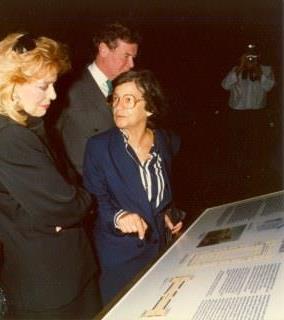
Photo from the archives of Victoria Solomonidis. From left to right: Melina Mercouri, Eleni Cubitt, Graham Binns in the British Museum's Duveen Gallery June 1986
Eleni Cubitt constantly supported Melina Mercouri, Greece’s then Culture minister, in her fight over the marbles. They became friends and worked closely together for several years.
"Melina's vision, enthusiasm and glow pushed me to get involved in the cause," she told Ta Nea in 2000.
In May 22, 1983, Mercouri delivered the Herbert Read Memorial Lecture at the Institute of Contemporary Arts in London. She later came face to face with the then director of the British Museum David Wilson.
Mercouri’s and Wilson’s showdown was widely seen as a PR disaster for the British Museum. It is a little-known fact that Mercouri had travelled to London thanks to Eleni who had managed to persuade the ICA to invite her.
“Cultural heritage should refer to those objects which are of central significance and vital importance to the sense of identity and dignity of a human group and whose removal by force or deception or even ignorance could cause great sorrow, pain and outrage to people who believe such objects belong to them as an integral and essential part of their history and their heritage,” Eleni said.
According to Nikandros Bouras’ book Greeks of London (London, 2013), Cubitt played a key role in the birth of the reunification campaign.
After Mercouri’s death, Eleni collaborated with successive Greek Culture Ministers on this issue.
"During my 25 years as Cultural Counsellor at the Embassy of Greece in London, I have had the pleasure and luck to work closely with Eleni. Tireless, inspired and always on the front line, she was a great friend and generous adviser. She was my great teacher. The thought that she is now joining Melina and Jules is a source of comfort," concludes Victoria Solomonidis, a member of the Board of the Melina Mercouri Foundation.
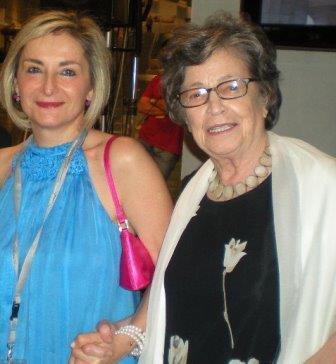
Victoria and Eleni at the New Acropolis Museum for the official opening in June 2009 from BCRPM's archives
To read the article in Ta Nea, please follow the link here.
The pdf is also here.
The British Committee for the Reunification of the Parthenon Marbles wishes to thank Ta Nea for covering this Committee's work from the very start and as early as 1983 (the year BCRPM was founded) and thanks also to the paper's UK correspondent, Yannis Andritsopoulos for allowing family and friends a few days to come to terms with the loss of Mrs Cubitt. Ta Nea respected this time and during these extraordinarily challenging times with news reported instantly, it has meant a great deal. Thank you Ta Nea.
The BCRPM was a lifetime's work and dedication for Eleni. Honorary President Anthony Snodgrass, Chair Janet Suzman and Vice Chair Paul Cartledge plus the thirteen members will continue to support all the initiatives that Eleni had put in place, not least this web site and we thank many more individuals, organisations and campaigners here in the UK, in Greece and elsewhere all over the globe.
Over the course of the next days and weeks, we will add messages we receive and wish to sincerely thank each and everyone for making time to write, remembering the exceptional and much loved Eleni.

